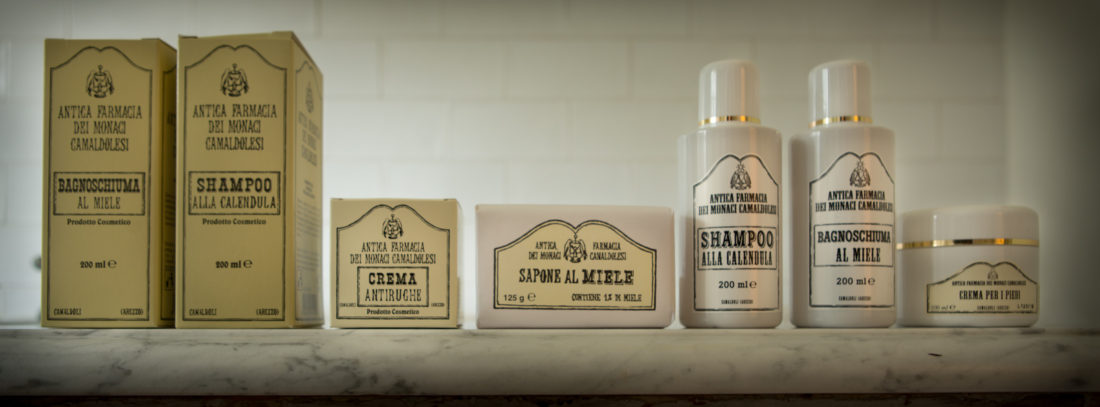
Me and the monks—silence and soap
In the last week or so I’ve felt a strange desire to spend the night in a monastery. Could be that I just had a birthday, or the need to reflect at the beginning of a new year, or just the desire for a real adventure, but I keep thinking about how much I want to go away to one of the many monasteries around here for a one night retreat. Solitude, silence, reflection, ancient buildings and art. The only problem seems to be that they are closed to overnight guests for the winter. So yesterday I did the next best thing—drove up to the Eremo and Monastero di Camaldoli. My reasons were twofold: the search for solitude, and good lotions and potions.
The monks around here are famous for making soaps, liquors, and cosmetics. The giant in the marketplace is the Officina Profumo-Farmaceutica di Santa Maria Novella in Florence.

Part museum, part store, all gorgeous. It has been in the same building since the monks of Santa Maria Novella started selling their wares to the public in 1612. It’s an interesting place to visit in Florence, although the crowds of tourists and price lists in dozens of languages take away from the charm. As does the fact that they now have hundreds of stores worldwide.
I was after something less-known so I found myself driving for over an hour on a tiny road through a national forest in the dense fog until I finally reached the summit of a mountain and the Eremo di Camaldoli. This hermitage was founded in 1012 by the Benedictine San Romualdo and is currently the home to nine monks who live in seclusion in separate cottages on the other side of a large gate. 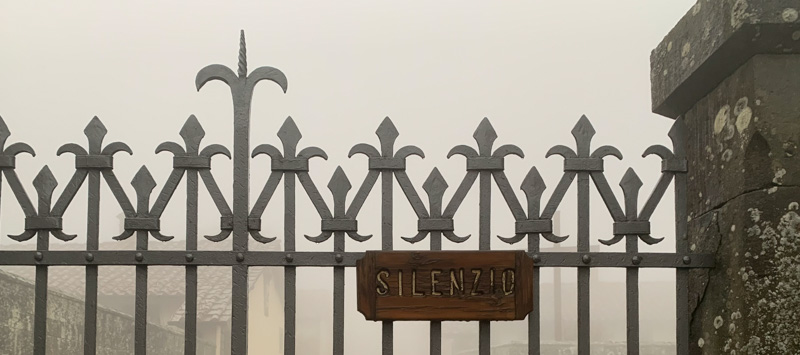

I badly wanted to spot a hermit but didn’t see another living soul through the fog, except for the woman in the shop. I did spot a non-living human, though.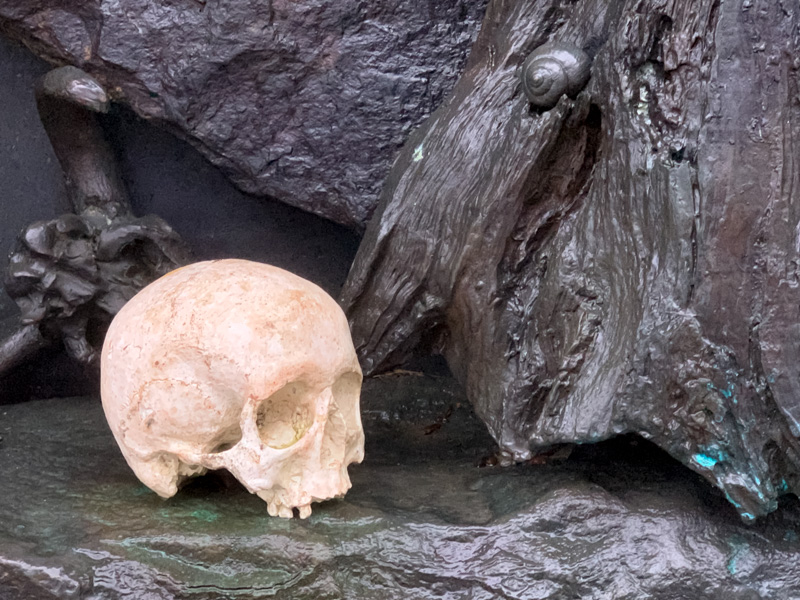 It was completely otherworldly and the austerity, foreignness, and loneliness of it was haunting. And the church was beautiful.
It was completely otherworldly and the austerity, foreignness, and loneliness of it was haunting. And the church was beautiful.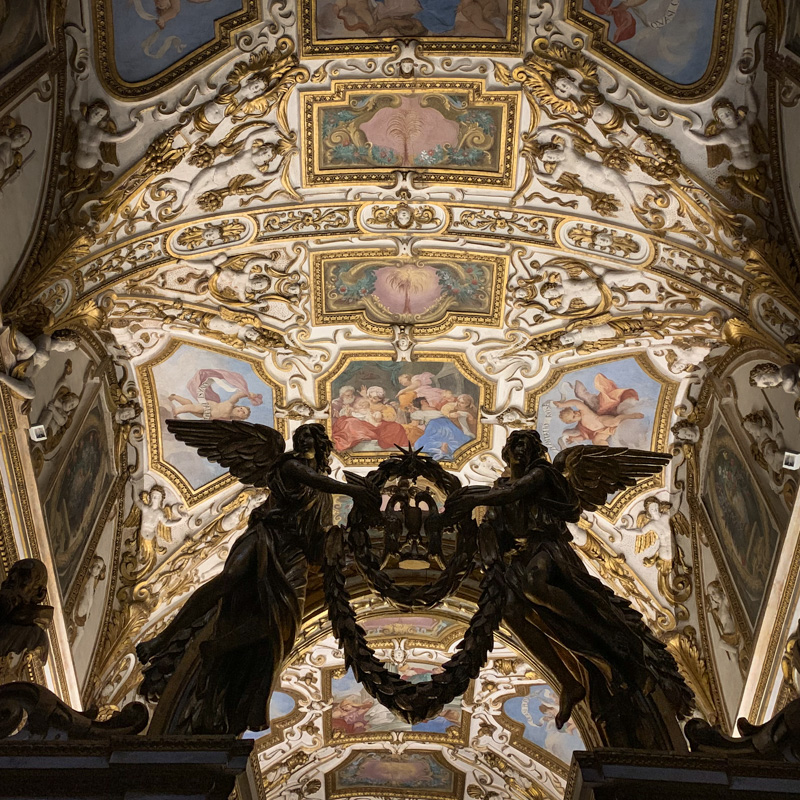
Several kilometers down the hill a monastery, and a hospital, were added to an earlier religious site from 995. Here pilgrims were treated and a laboratory produced medicines. The monks who live there, now around 90 in number, have been producing various medicines and potions ever since. They started a store in 1450. The store is still functioning and includes their books about medicine. 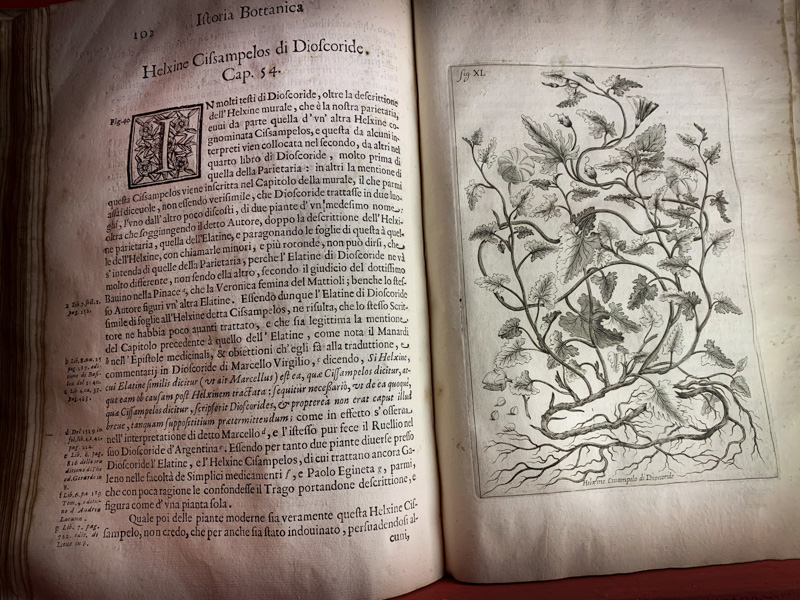
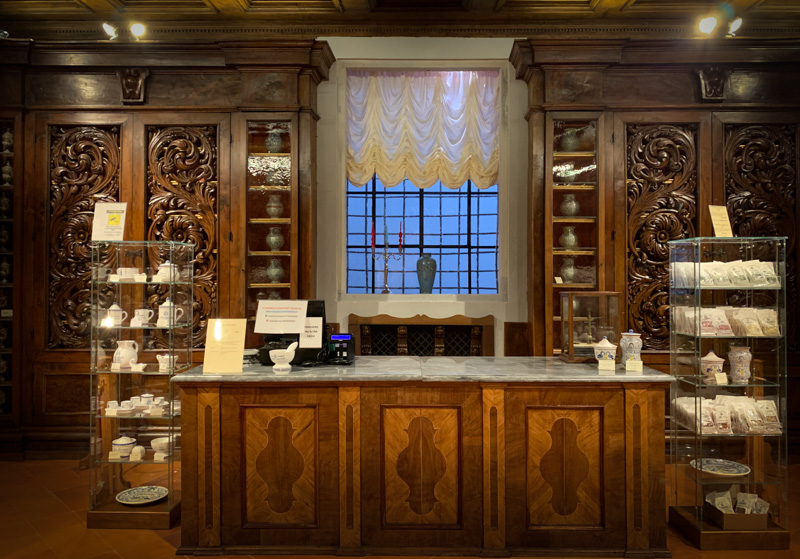
Although largely silent and in retreat from the world, they have an online store if you want to order your own, or you can follow them on their several social media sites. Why not turn to monks for anti-wrinkle cream and foot balm? I tried both and I really liked them, and their shampoo, body wash, candles…
But here’s where the story gets weird, and passes my editorial threshold for Itch. In doing further research I uncovered that there’s a branch of this monastery in Big Sur. (You have to admire their branding in snagging the URL “contemplation.com.”) I wrote to them and they said they are indeed linked, and that the head honcho from Italy comes over every five years or so to make sure everything is in order (“tutto apposto.”) It sounds like an amazing stay, although it books up about a year in advance.
But here the plot thickens. There is also an affiliated branch in Berkeley, the all-too familiar town we left behind. In a house on a road I used to travel several times a week.
From the top of a mountaintop far in rural Tuscany to a suburban house in Berkeley. And it is all linked. To quote Buckaroo Bonzai, “Wherever you go, there you are.”






No Comments